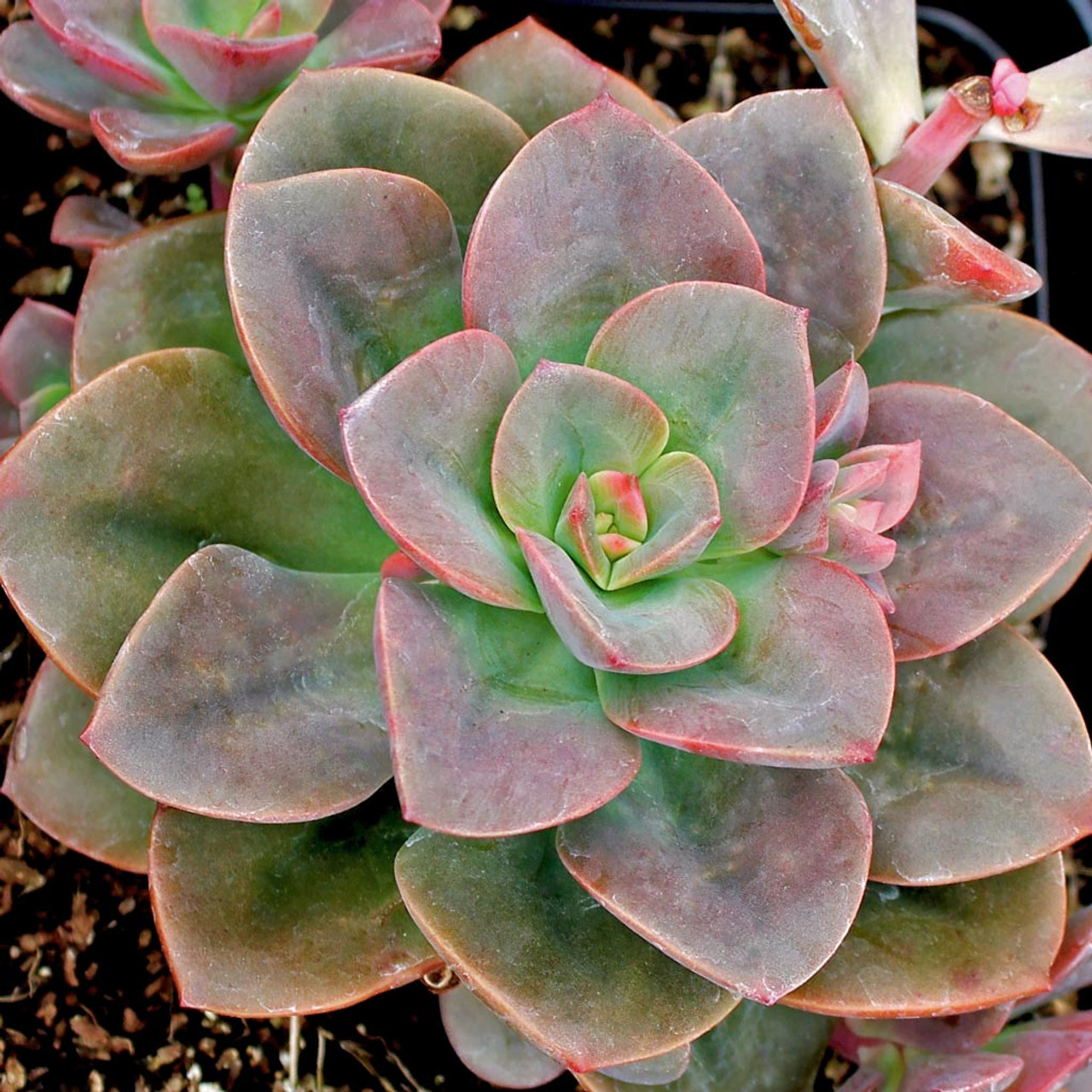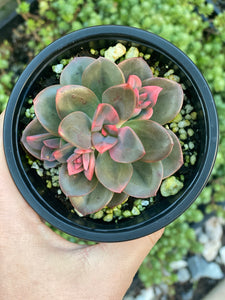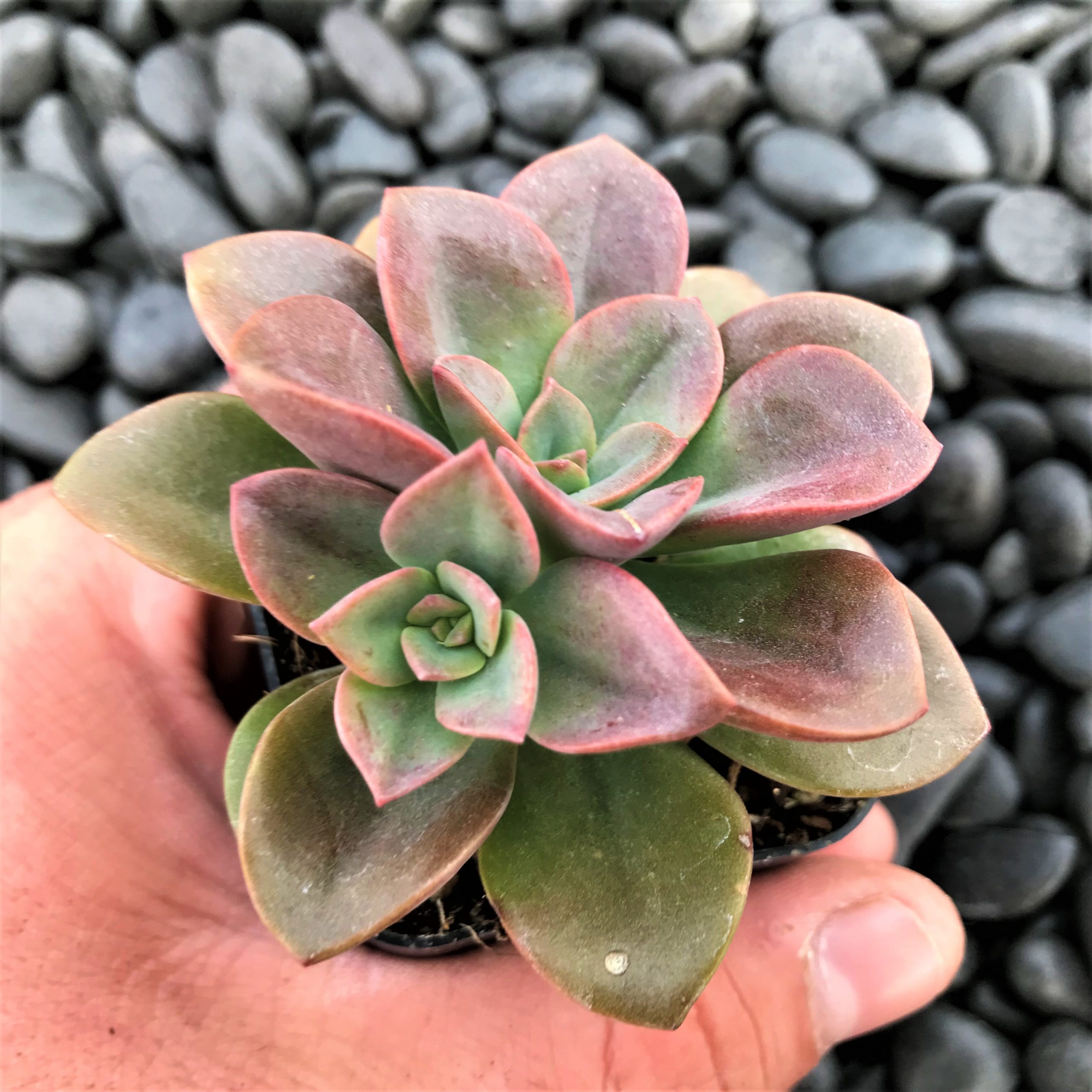This stunning succulent has colorful, mottled leaves. Depending on the amount of sunlight it gets, the color of the rosette can range from blue, purple, pink, orange or even a bronze hue. In the spring, you may see yellow flowers blooming.
Table of Contents
Care and Propagation Information
This succulent, Echeveria ‘Chroma’, is an ideal choice for succulent arrangements, planters, and rock gardens. It is a shrub-like plant that forms clumps and its blooms can bring in hummingbirds.
Watering
Echeveria ‘Chroma’ should be watered in a way that is typical for succulents. The best option is to use the “soak and dry” approach and make sure the soil is completely dry before giving it another drink.
Where to Plant
If you live in an area with temperatures below 30° F (-1.1° C), it is recommended that you plant Chroma in a container that can be moved indoors and placed under a grow light. This succulent flourishes in full to partial sun.
Put a plant in a spot in your garden that is exposed to 6 hours of direct sunlight each day.
How to Propagate Echeveria ‘Chroma’
Echeveria ‘Chroma’ can be propagated by taking cuttings, removing leaves, or dividing offsets.
Cuttings
To propagate Chroma from cuttings, use a clean, sharp knife or scissors. Cut a stem from the main plant and let it sit for a few days so the cut end can form a scab. Plant the cutting in soil that drains well, and water it only when the soil is completely dry.
Leaves
To increase the chances of successful propagation of ‘Chroma’, twist a leaf off the mother plant and ensure that no part of the leaf is left attached to the stem.
Let the leaf dry out for a few days so the edges form a protective seal, then put it in a soil that drains well. Make sure to only water it when the soil is completely dry.
Offsets
Echeveria ‘Chroma’ will generate small offsets that appear around its base. Take the offsets out of the ground and let them dry for 1-2 days before replanting them.
Care and Propagation Information
General Care for Echeveria ‘Chroma’
Watering
Echeveria ‘Chroma’ should be watered in a way that is typical for succulents. The best option is to use the “soak and dry” approach and make sure the soil is completely dry before giving it another drink.
Where to Plant
If you live in an area with temperatures below 30° F (-1.1° C), it is recommended that you plant Chroma in a container that can be moved indoors and placed under a grow light. This succulent flourishes in full to partial sun.
Put a plant in a spot in your garden that is exposed to 6 hours of direct sunlight each day.
How to Propagate Echeveria ‘Chroma’
Echeveria ‘Chroma’ can be propagated by taking cuttings, removing leaves, or dividing offsets.
Cuttings
To propagate Chroma from cuttings, use a clean, sharp knife or scissors. Cut a stem from the main plant and let it sit for a few days so the cut end can form a scab. Plant the cutting in soil that drains well, and water it only when the soil is completely dry.
Leaves
To increase the chances of successful propagation of ‘Chroma’, twist a leaf off the mother plant and ensure that no part of the leaf is left attached to the stem.
Let the leaf dry out for a few days so the edges form a protective seal, then put it in a soil that drains well. Make sure to only water it when the soil is completely dry.
Offsets
Echeveria ‘Chroma’ will generate small offsets that appear around its base. Take the offsets out of the ground and let them dry for 1-2 days before replanting them.
FAQ
How big does Echeveria Chroma get?
Our Echeveria Chroma boasts an eye-catching rosette with a colorful range of shades. Its foliage is unique, with spots of cream, green, purple, bronze, pink and red randomly scattered across each leaf. Every leaf is different from the next, and the plant can reach a maximum size of 3 – 5 inches wide.
What is the maximum size of Echeveria agavoides?
The Echeveria agavoides is a striking rosette featuring green foliage with a hint of red along the edges and tips. It can reach up to 6 inches wide and tall, making it an ideal choice for any collector. It is a classic green succulent that is sure to add a unique touch to any collection.
Is Echeveria Chroma variegated?
This eye-catching succulent boasts dark variegated leaves. Depending on how much light it gets, the shades of its rosette can range from blue, purple, pink, orange, to even a metallic brown.
What is the common name for Echeveria Chroma?
Echeveria, commonly referred to as “Mexican Hens & Chicks”, can produce offsets or “chicks” that grow around the base of the mother plant.
What is the biggest Echeveria?
Echeveria gibbiflora is the biggest of all echeveria varieties and is one of the original parent plants of the popular, big, cabbage-like echeveria hybrids that are so familiar.



